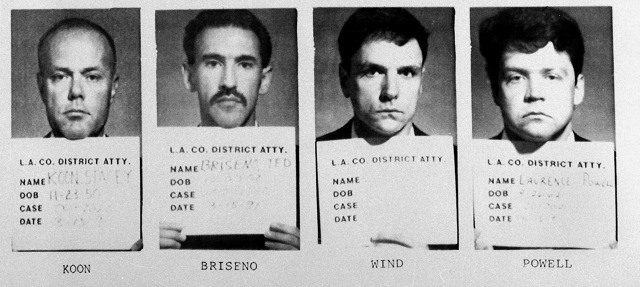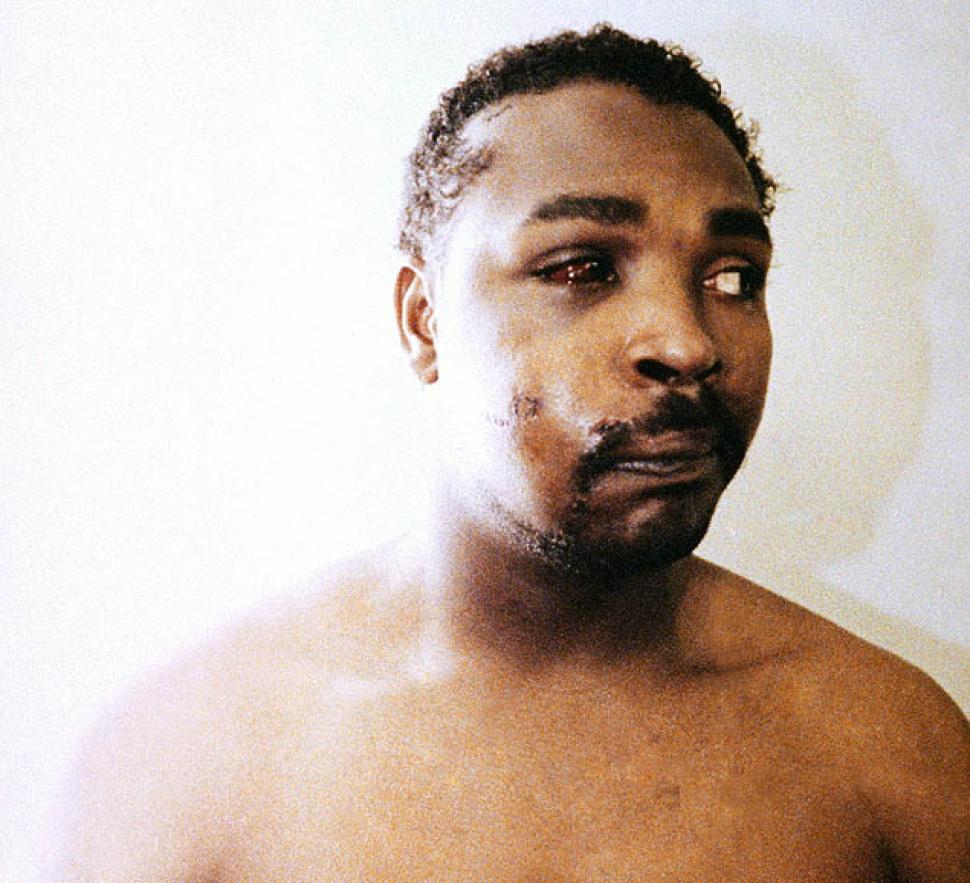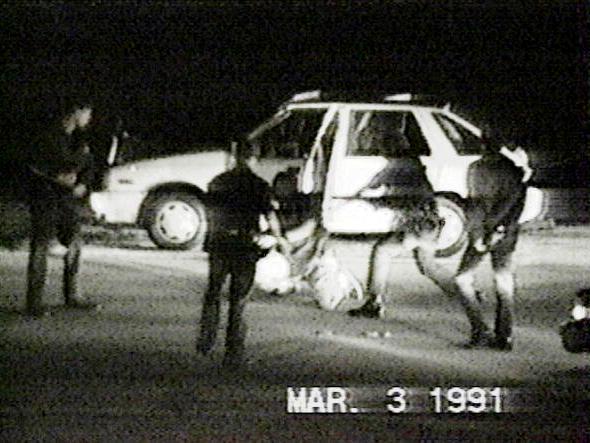Part 1 of 5 Part Series by Staff Writer Nunneh Nimley
Today is a very important day, not only in Black History or hip hop, but in American history. It marks the 23 year anniversary of an uprising in the 2nd largest city in the United States, in response to the reading of a "Not Guilty" verdict in a Simi Valley, California courtroom. This story has it's beginning a year before, on the night of March 3rd, 1991 on the Foothill Freeway, through the Lake View Terrace neighborhood of Los Angeles.
Motorist Rodney King and 2 passengers are on their way home, after a night of partying, (and since this is the early 90's, a night "partying" means anything from simply drinking a few beers to recreational use of cocaine and PCP). So here you have King who is behind the wheel, intoxicated and on parole for a previous conviction for robbery, the flash of police lights frightened him, rightfully so. His panic leads to him to a chase with the California Highway Patrol (CHP), it is alleged that speeds reached 115mph, (mind you Rodney was driving a Hyundai, and this is 1991). Officers Tim and Melanie Singer, husband-and-wife members of the (CHP) are the first in pursuit. After exiting the freeway, the chase resumed through the streets of LA, and by this time several LAPD cars and a police helicopter was now involved.
The chase would end on interstate 210 (or Foothill Freeway), and King who had now accepted his fate that he was not only caught, but he was also more than likely on his way back to prison, and would receive a decent sized beating from the LAPD. This is Los Angeles in 1992, King has admitted that he knew he would get beat up, but what no one knew was how bad. After witnessing his 2 passengers be assaulted by authorities (Freddie Helms was hit in the head with a flashlight. Bryant Allen was beaten to the ground before being stomped, and taunted by LAPD officers) before being placed in squad cars, King was understandably apprehensive on exiting the vehicle after a few moments of contemplation, he to exited the vehicle.
What happened after King exited the vehicle would become front page news. By this time Sergeant Koon has told the CHP to stand down, the LAPD officers holstered their weapons. By now, he was joined by officers Briseno, Powell, Solano, and Wind who claimed to be using a tactic by the name of “swarm” to subdue, and handcuff King. It ended up becoming something more like a mob attack. King was tased, and repeatedly hit with night sticks, kicked and promised to be beat to death. The extent of his injuries included a broken leg, 9 skull fractures, facial nerve damage that would leave portions of his face paralyzed for life. Multiple contusions and broken bones all over his body. Doctors said he had lost more blood than anyone they had ever seen survive an attack.
As Rodney laid in the hospital, jail was no longer his #1 concern, after the beating he took, if not a lawsuit maybe he could simply just not be sent back to prison. But he also knew that the police would say he attempted to assault them, and resisted arrest and as usual they would be free to continue their actions on other Los Angeles residents, but something happened that would make this story relevant today.
While Rodney was taking the beating of his life, George Holliday (who was testing out his new video camera) saw the lights outside and begin to record. What was captured on his lens would forever change the history of Los Angeles and the way it was policed. Holliday recorded as King was pummeled, he had no clue who he was or why he was being beat up, but he had a feeling the video was something important and kept on recording. He held on the tape for a day or 2 before contacting the LAPD about what he had recorded, but as usual the arrogant LAPD ignored his attempt to let them view the video. In retrospect it was a blessing in disguise, had they got their hands on that video, it would have most certainly be altered, if not be destroyed altogether. After those failed attempts he eventually found someone who would listen to him and also watch his video. KTLA took it to the next level when they aired Holliday’s video on the news, and from that moment on it became the game changing moment in police brutality Blacks had been talking about for decades.
After airing on Local Southern California news, it eventually became national news and was being talked about throughout the country. Blacks from the inner city cheered, as they believed it would finally open the country’s eyes to what has been a problem in poor neighborhoods, and their strained relationship with their local police forces. Rodney King was the topic of discussion every where, from newspapers and magazines to street corners and newsrooms. This was now, huge and something had to give. The fact that it was finally captured on a video - their prosecution seemed like it would be an open and shut case, I mean what defense could they possibly present? How do you justify hitting a man laying on the ground 50 plus times when there’s no evidence of his resisting or posing the threat to any of the arresting officers?
The chief of police, Daryl Gates held a press conference, where he asked the now outraged public to wait for due process, and promised that justice would prevail. The problem was his idea of justice as member of the police force was much different the poor black and brown people of South Central Los Angeles. The district attorney charged officers Stacy Koon, Laurence Powell, Theodore Briseno and Timothy Wind with use of excessive force. While the public was hoping for something more on the lines of “attempted Murder”, or at least “Assault” Sergeant Koon, who didn’t strike King, only using his taser, as the highest ranking officer at the scene, was charged with "willfully permitting and failing to take action to stop the unlawful assault”.
It wouldn't be until a year later until the officers faced a judge. Due to the high running tensions of the case, the venue was changed to the majority white suburb of Simi Valley. This should have been the first of many clues that the law was not going to be in favor of Rodney King. To make matters worse, the jury put together didn’t include a single African-American. The inner city was on the edge of their seats, because while it seemed like an open and shut case, it also had all the making of a conspiracy and talks of what could happen if the jury ruled in favor of the officers could be heard throughout the country’s many Black communities.
On the morning of April 29th 1992, a jury of 10 Whites, 1 Asian, and 1 Latino returned a verdict of “Not Guilty” for 3 of the 4 officers, an agreement could not be reached for Powell. So after a year of uncertainty, the Black and brown communities of Los Angeles, and throughout the country had their answer, no, the police officers who almost beat a black man to death on film would not face any punishment for their actions. Essentially telling the city’s population that it was 100% legal to violate your rights, and not even video evidence could change that.
Black city residents and leaders would meet at First AME Church in South Central, where frustrations were voiced by everyone from city council members to community leaders. Once again, the Black community was given the middle finger by the justice system we’ve time and time again been told to trust in. This wasn’t the first time justice wasn’t served, but what was happening outside the church was a whole different type of meeting. Brothers from the streets of the roughest neighborhoods in LA were outside venting their anger and frustrations with the system, and promising retribution, and what would happen after that has become the topic of discussion for the 23 years since.






